Masterpiece Story: The Death of Cleopatra by Edmonia Lewis
As a Black and Indigenous woman, Edmonia Lewis overcame prejudice and defied societal expectations to become a successful sculptor. Her Death of...
Catriona Miller 1 October 2024
Magpie is a masterpiece by Claude Monet that captures the poetic play of light upon a winter landscape. It is a symphony of ivory and gray.
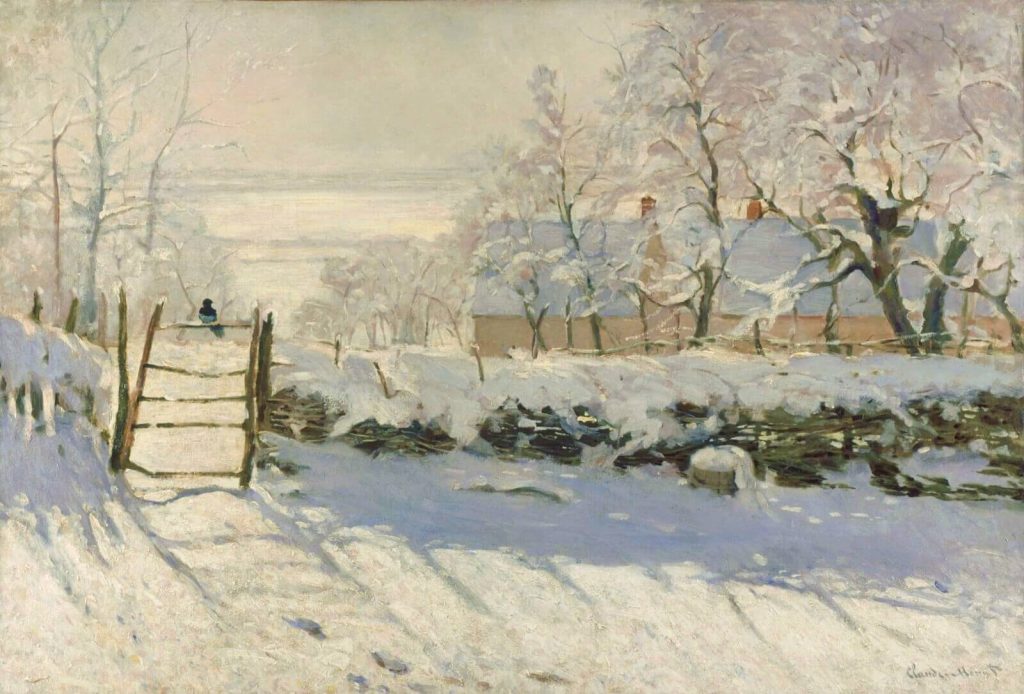
Claude Monet, Magpie, 1868-1869, Musée d’Orsay, Paris, France.
There is something magical about a landscape painted by Claude Monet. No matter the time or the season, he captures the nuanced variations of light. Monet was the founding artist of French Impressionism in the 1860s, and his style of loose, quick, and instantaneous painting revolutionized the Western art world. After decades of society’s rejection, French Impressionism eventually gained popularity, and it maintains its popularity today after more than 160 years since its birth. Magpie by Monet is a snowscape masterpiece that captures the artistry of French Impressionism and the spirit of the winter season.
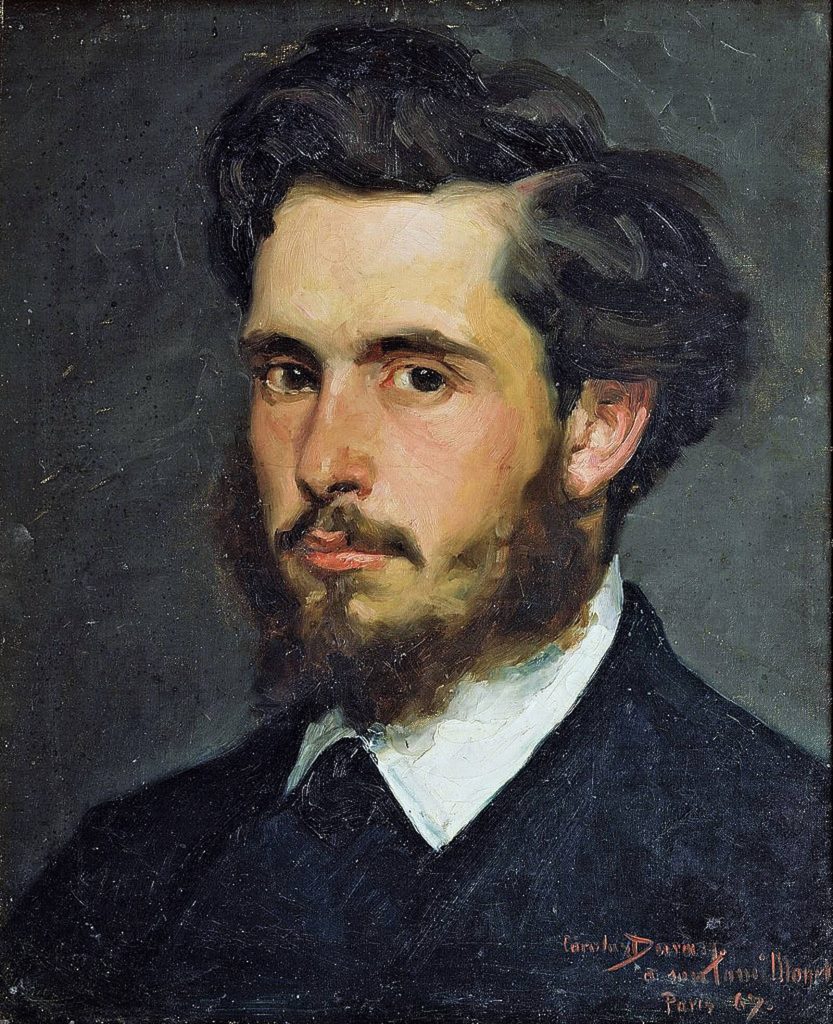
Carolus-Duran, Portrait of Claude Monet, 1867, Musée Marmottan Monet, Paris, France.
Claude Monet painted Magpie during the winter of 1868-1869. It is an oil on canvas that measures 130 cm long by 89 cm high (51 in by 35 in). The canvas is almost a perfect 2:3 rectangle with the height being almost two-thirds its length. The composition is a winter landscape blanketed by snow. A stone wall perfectly divides the image into two equal horizontal spaces. The space below the wall is the foreground, and the space above the wall is the background. A black-gray magpie sits on a wooden gate near the left mid-ground. A house surrounded by pine and oak trees stands in the right background, immediately behind the wall. The bird, wall, and trees cast diagonal shadows upon the foreground snow, adding a sense of visual movement to an otherwise still moment. Only the occasional chirp of the magpie breaks the scene’s icy silence.
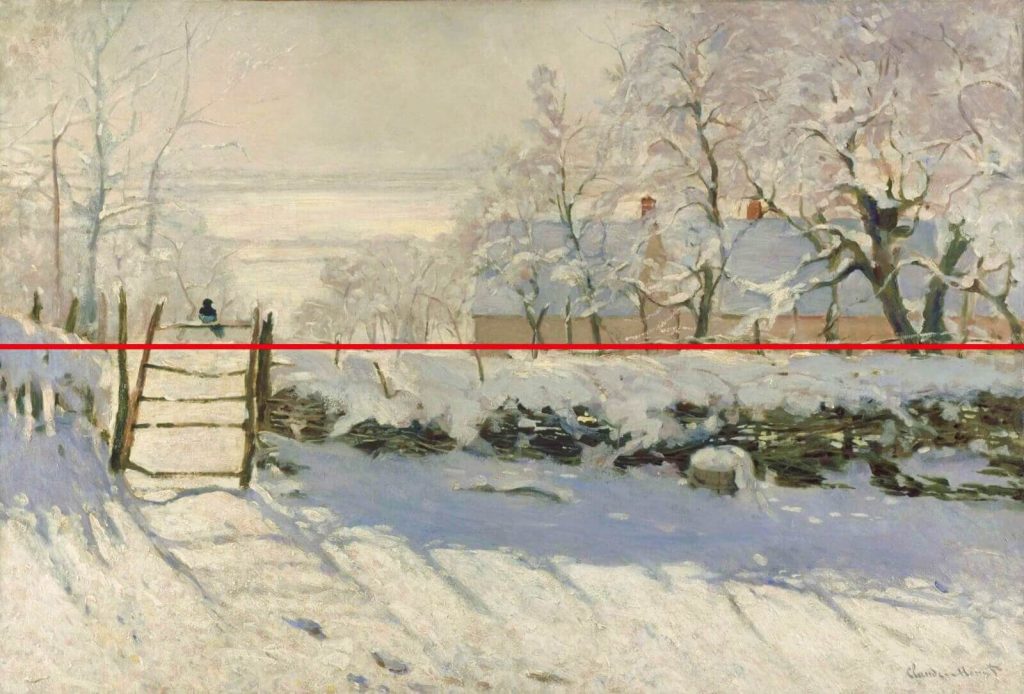
Compositional division in Claude Monet, Magpie, 1868-1869, Musée d’Orsay, Paris, France.
Approximately 80 km (50 mi) northwest of Rouen and 200 km (124 mi) northwest of Paris is the coastal town of Étretat. Claude Monet frequently visited Étretat because he appreciated its dramatic seaside cliffs. However, the interior landscape of Étretat also fascinated Monet because Magpie depicts an Étretat snowscape. During the winter of 1868-1869, the snow was particularly heavy in Étretat, and Monet captured the deep snow layer in this painting. The brown stone wall is almost entirely white with its hefty snowcap, the trees resemble ice sculptures, and the ground is a white carpet. However, Monet adds depth and interest to the snowscape with countless shades of cream, varied with countless infusions of blue and gray.
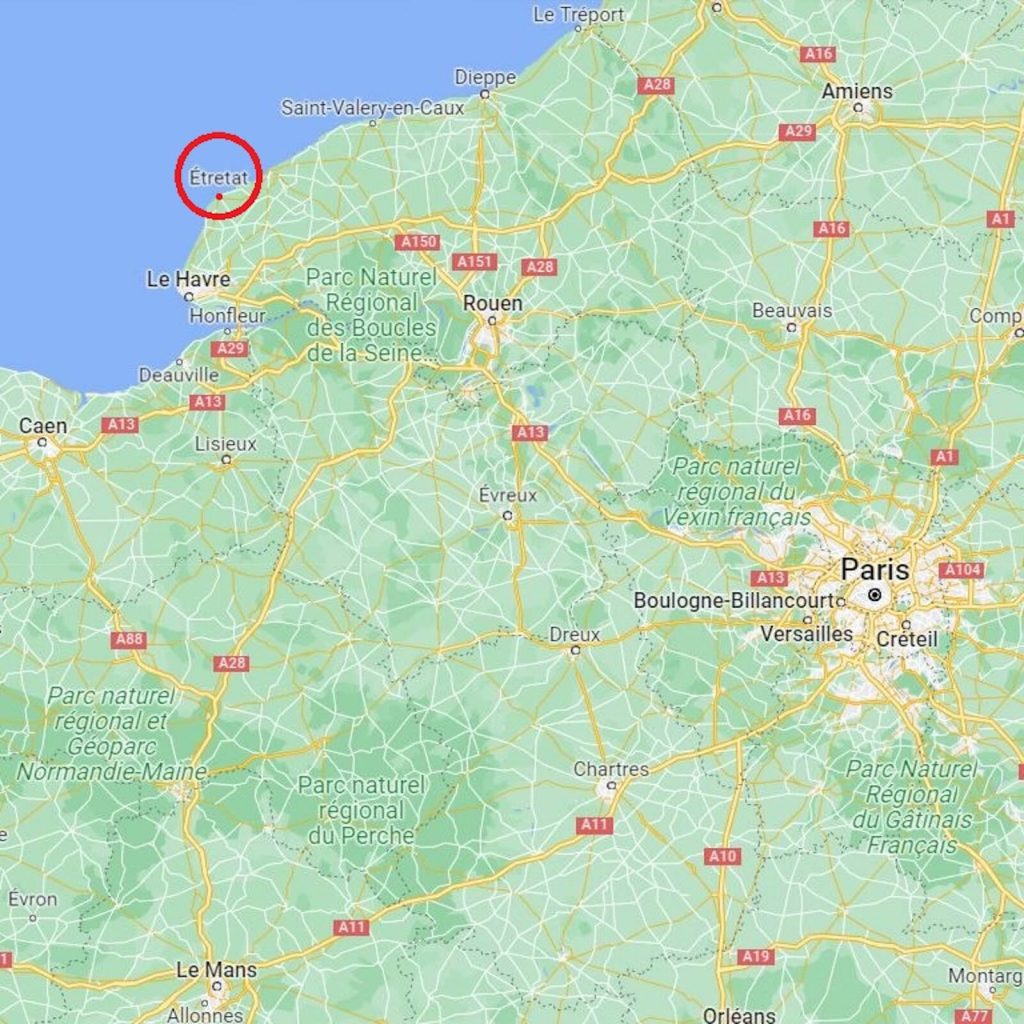
Étretat, digitally manipulated image. Google Maps.
Claude Monet is most famous for his waterscapes featuring water lilies. Therefore, his snowscapes like Magpie receive far less attention and praise by the general public. However, the overshadowing of Magpie and other wintery scenes does not diminish their artistic merit. Monet became famous for his play of light upon water, but his play of light upon snow is just as majestic. Snow has a magical quality of simultaneously reflecting and absorbing light. Snow is the physical solid manifestation of water, hence it has similar refractive properties as liquid water. However, snow does not move and ripple as water because of its solid volume and mass. Therefore, illuminated snow can twinkle and shimmer like millions of diamonds as it catches the light upon its irregular solid surfaces.
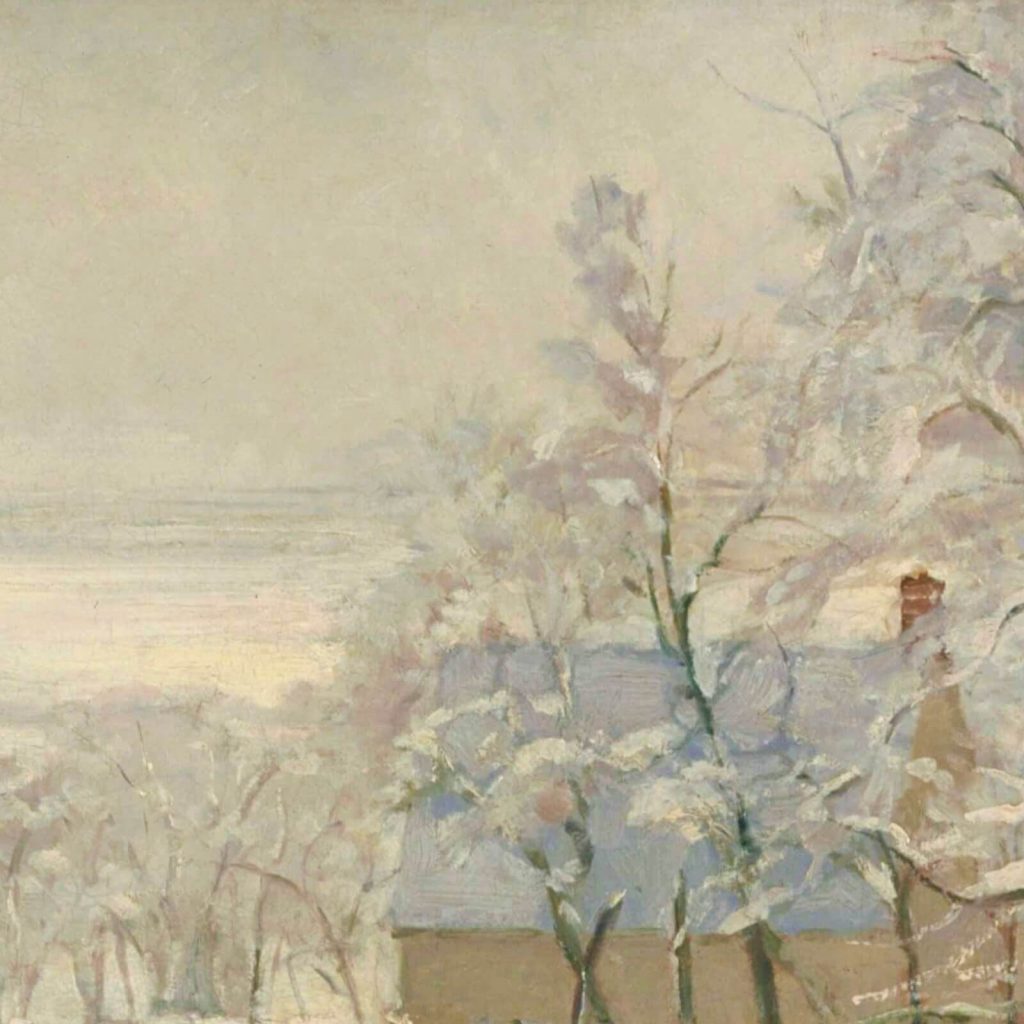
Claude Monet, Magpie, 1868-1869, Musée d’Orsay, Paris, France. Detail.
Rising above the frozen earth is a single black-gray magpie perched on a wooden gate. It is a delicately small animal compared to the robust wall, house, and trees. However, its diminutive size adds charm to the scene by adding a sense of scale and proportion. The viewer can understand the snow’s thickness and the trees’ heights by comparing the size of the magpie.
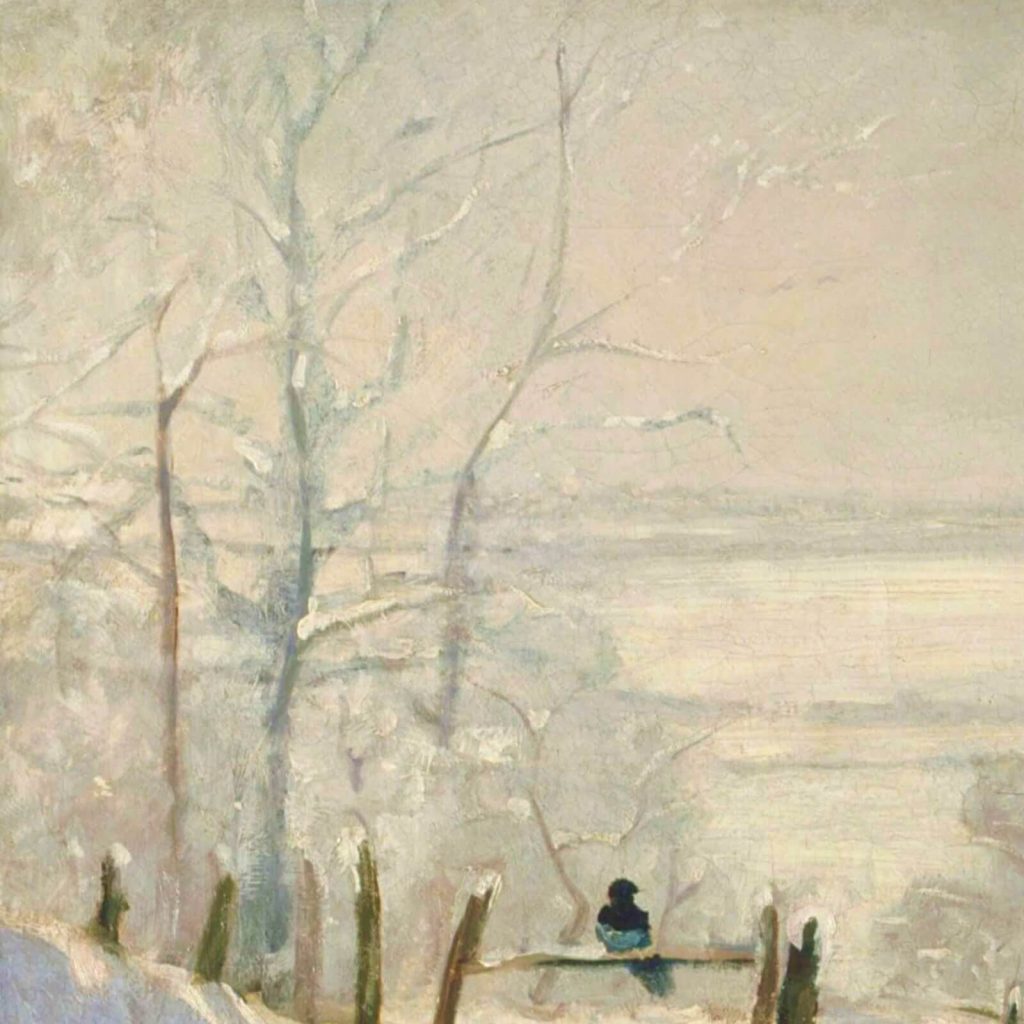
Claude Monet, Magpie, 1868-1869, Musée d’Orsay, Paris, France. Detail.
Some art historians have commented that the magpie appears like a note on sheet music. The five wooden rods of the gate resemble a musical staff with the magpie being an “F” note in Treble Clef or an “A” note in Bass Clef. Perhaps Monet wanted to inject a musical illusion into the magpie’s chirp?
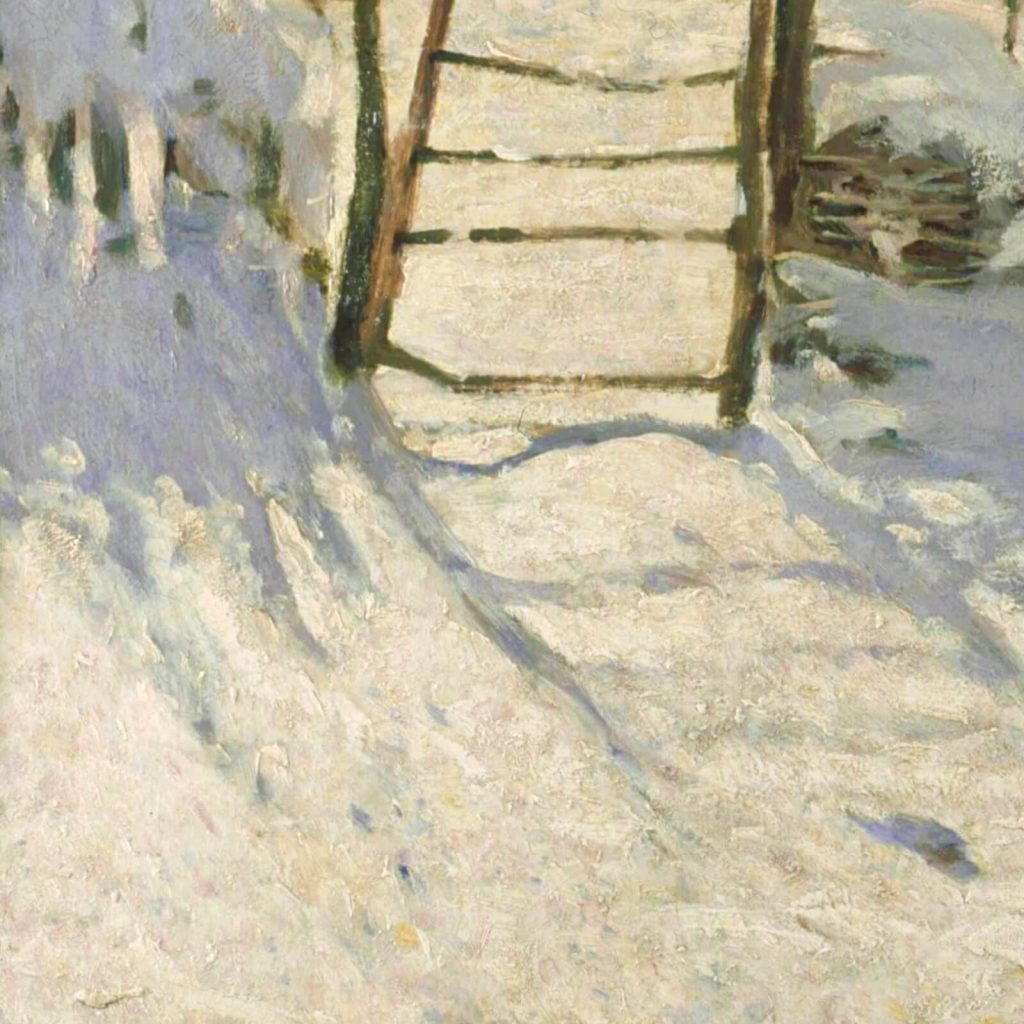
Claude Monet, Magpie, 1868-1869, Musée d’Orsay, Paris, France. Detail.
Magpie is a beautiful painting because it is a symphony of creamy hues. Different shades of cream illustrate the complex interactions among light intensity, snow thickness, and object surfaces. For example, direct sunlight shining on 10 centimeters of snow covering a stone wall will result in a different color compared to indirect sunlight shining on five centimeters of snow covering a low tree branch. Each color represents a different illuminated spatial relationship.
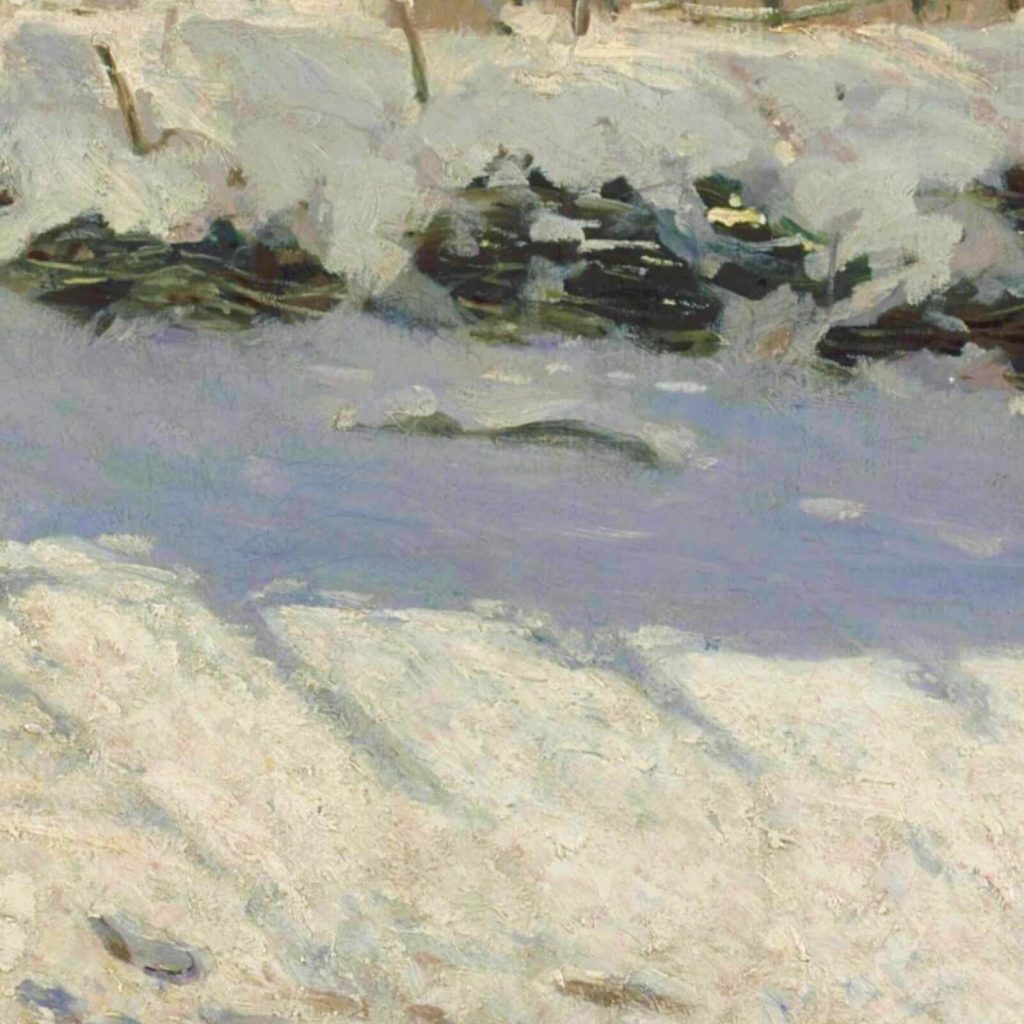
Claude Monet, Magpie, 1868-1869, Musée d’Orsay, Paris, France. Detail.
When Claude Monet submitted Magpie to the Salon of 1869, it was rejected by the judging committee. The committee said the painting was too pale and too fleeting. It did not have the Academy’s standards of a glossy smooth finish. For the Salon, it resembled too much a preparatory sketch and not like a finished Academic painting. Simply put, Magpie and other French Impressionist paintings were neither officially approved nor formally recognized art.
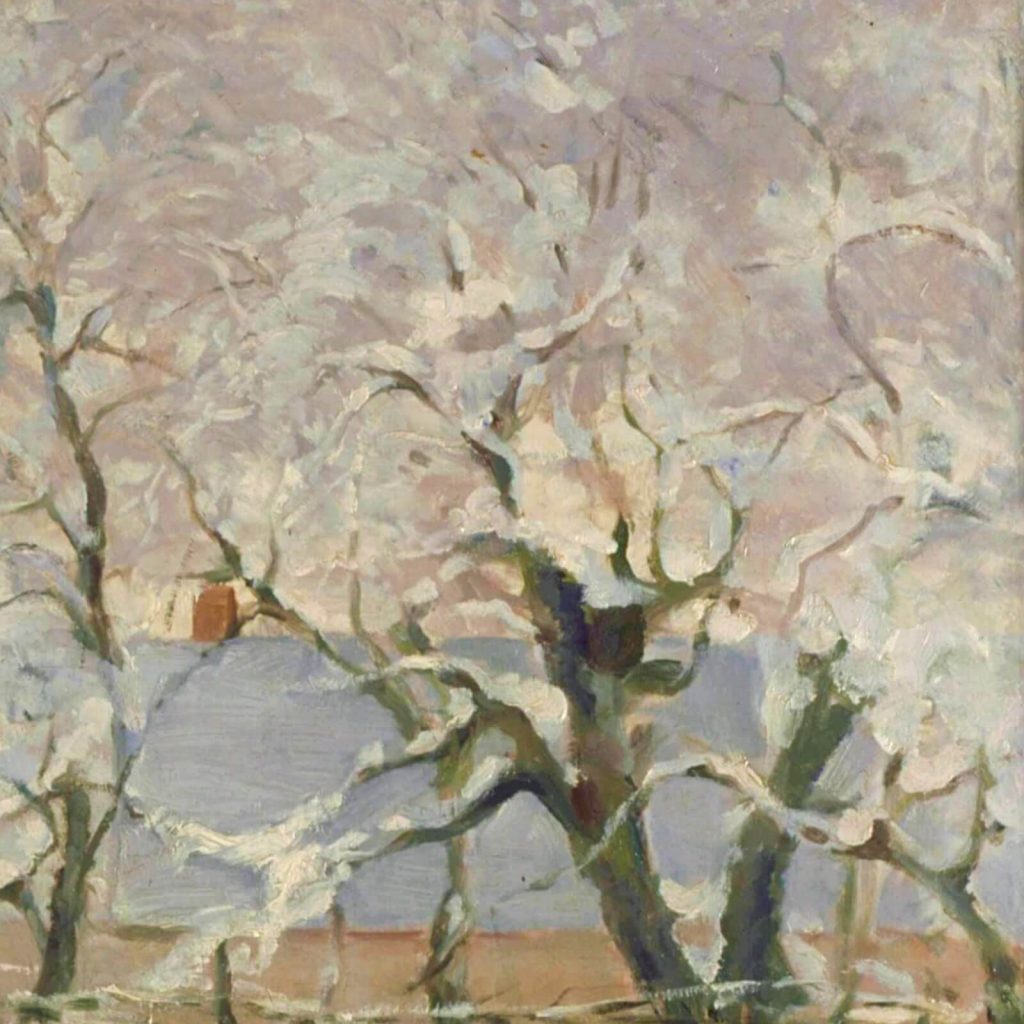
Claude Monet, Magpie, 1868-1869, Musée d’Orsay, Paris, France. Detail.
The Musée d’Orsay in Paris purchased Magpie in 1984 and added it to their world-renowned Impressionist collection. Unlike the Salon of 1869, The Musée d’Orsay and the majority of humanity now recognize Monet, and therefore Magpie, as an artist of value. Magpie is a complex painting that explores an artist’s perception over photographic description. It presents Monet’s subjective view over a collective objective view. Magpie is such a beloved wintery masterpiece that it has graced the front of many seasonal holiday cards in December. Will you be sending a holiday greeting card this year? If so, see if you can find or create one with the Magpie. Your receiver will love it.
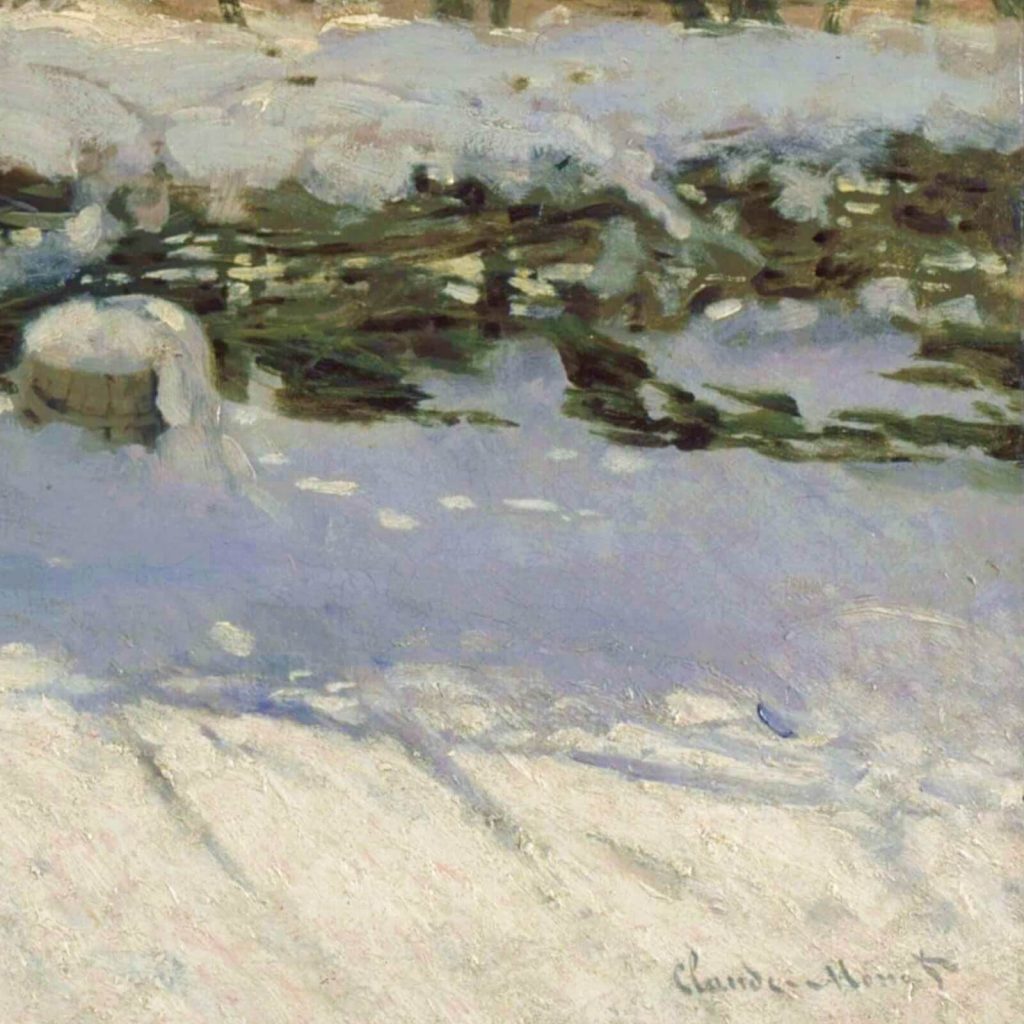
Claude Monet, Magpie, 1868-1869, Musée d’Orsay, Paris, France. Detail.
“Claude Monet.” Collection. Musée Marmottan Monet. Retrieved 28 November 2022.
“Magpie.” Google Arts & Culture. Retrieved 28 November 2022.
“Magpie.” Collection. Musée d’Orsay. Retrieved 28 November 2022.
DailyArt Magazine needs your support. Every contribution, however big or small, is very valuable for our future. Thanks to it, we will be able to sustain and grow the Magazine. Thank you for your help!